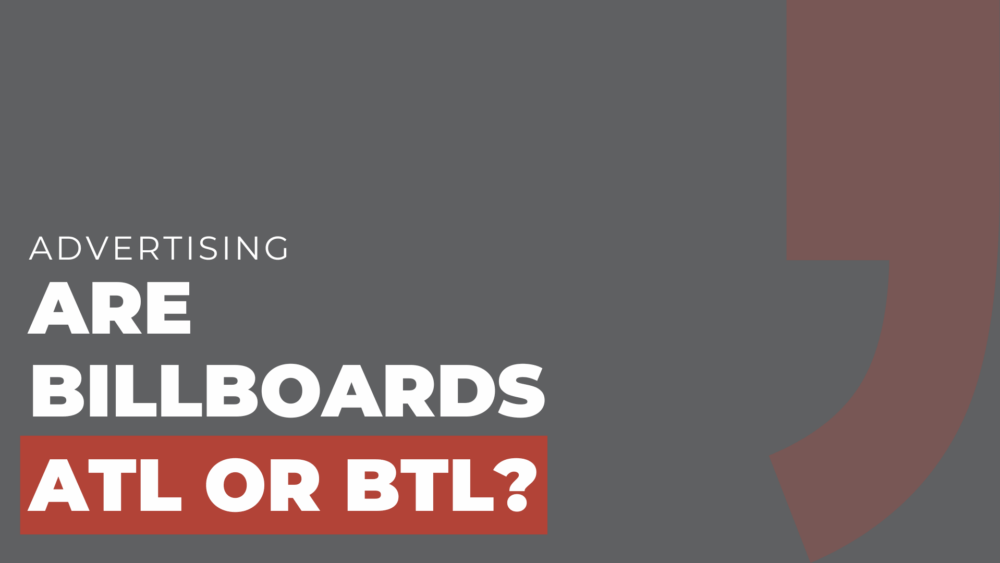Everyone has seen a billboard.
Outdoor advertising is important for that reason.
Billboards are considered above the line (ATL) marketing.
ATL and BTL strategies are important concepts in identifying the purpose of your marketing campaign.
What exactly does above the line and below the line marketing mean, and why are billboards considered ATL?
Let me explain.
What is above the line marketing?
Above the line marketing refers to advertising efforts that are aimed at a wide audience and use mass media channels to promote a brand or product.
This includes traditional forms of advertising such as TV commercials, radio ads, print advertisements, and yes, billboards.
These methods are called “above the line” because they are more visible and have a broader reach compared to other forms of marketing.
ATL marketing examples:
To illustrate the concept of above the line marketing, let’s take a look at a few examples.
Think about those catchy TV commercials you see during the Super Bowl or the colorful billboards that tower above busy highways.
These are classic examples of above the line marketing.
The goal is to create brand awareness and capture the attention of as many people as possible.
Why do billboards qualify as ATL advertising?
Billboards are undoubtedly a prime example of above the line advertising.
They are large, visually appealing displays strategically placed in high-traffic areas.
Whether you’re driving on a freeway or walking through a bustling city, billboards catch your eye and deliver a message.
They’re designed to make a lasting impression and create brand recall, making them an effective tool for ATL marketing campaigns.
What is below the line advertising?
Below the line advertising, on the other hand, focuses on targeted marketing efforts to reach a specific audience.
This includes tactics like email marketing, direct mail, social media campaigns, and influencer collaborations.
These methods are called “below the line” because they have a narrower focus and are often more personalized.
BTL marketing examples:
To better understand below the line marketing, let’s consider a few other examples.
Think about those personalized emails you receive from your favorite brands or the targeted ads that pop up on your social media feed.
These are common examples of below the line marketing.
The goal is to engage with a specific group of people and encourage direct interaction.
Why are billboards not BTL advertising?
While billboards can catch the eye of individuals passing by, they do not fall under the below the line advertising category.
Unlike targeted email campaigns or personalized social media ads, billboards are not tailored to individual consumers.
Instead, they aim to create broad brand awareness and capture the attention of a wide audience, making them a perfect fit for above the line marketing strategies.
So, are billboards ATL or BTL?
Billboards are undoubtedly considered above the line (ATL) marketing.
They are part of the wide-reaching advertising efforts that aim to create brand awareness among a large audience.
This serves a purpose distinctly different from below the line tactics, which focus on engaging with a specific group of people.
Ultimately, billboards are an effective tool for ATL marketing campaigns and should be leveraged to reach a wide audience.
Appropriately utilizing both ATL and BTL advertising strategies can help create a well-rounded marketing plan that effectively promotes a brand or product.


Comments are closed.